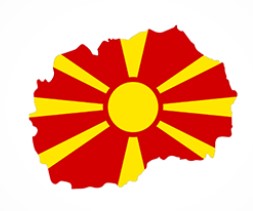
North Macedonia is a landlocked country of a little under 2 million in Southeast Europe. It shares land borders with Kosovo (northwest), Serbia (north), Bulgaria (east), Greece (south) and Albania to the west.
The thing I could not wrap my head around was why North Macedonia when there was no south, east or west Macedonia. Ultimately it comes down to the fact that the ancient civilisation of Macedonia occupied an area that include areas of Macedonia and northern Greece and Bulgaria. While Bulgaria could deal with this, Greece took another 15 years to finally come to the party.
Skopje
Skopje (pronounced Scorpia) is the capital and largest city that houses a quarter of the country’s population. It only became the capital of the Republic of Macedonia in 1991 when the nation declared independence after spending centuries under the rule of the Roman, Byzantine, Serbian, and Ottoman Empires and Yugoslavia.
By way of background, the city of Skopje was pretty much levelled by an earthquake in 1963 which took out about 80% of the city and killed over a thousand people.
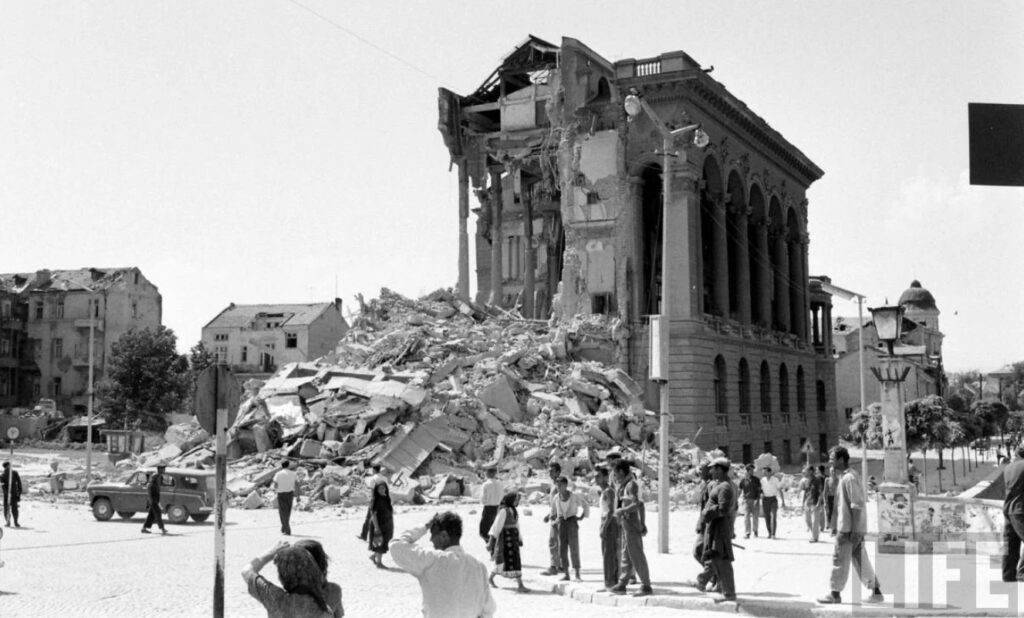
This included most of the neoclassical buildings in the central part of Skopje. When they rebuilt they did so quickly and with ugly modern buildings. After independence the former Macedonian government implemented a program of redevelopment (Skopje 2014) aimed to make the city more attractive to tourists. The program has been the most controversial issue in recent Macedonian politics and the most divisive question among the citizens of Skopje.
The plan involved the construction of around 20 buildings (colleges, museums and government buildings) and the erection of over 40 monuments and countless statues. By the end over 100 sculptures, 34 monuments, 27 buildings, 6 garages, 5 squares, and 1 triumphal gate, were built. Add to this numerous other things like fountains, small squares, and candelabra, while at the same time12 parks and green corners had been ruined (the local’s view).
It was originally costed and claimed to be worth 80 million euro but ended up reaching nearly 640 million.
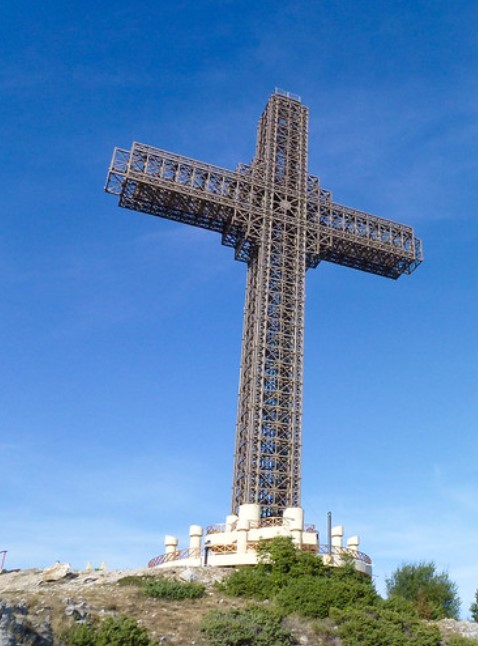
Overlooking the entire city is the Millennium Cross. It is a 66-meter tall cross, built on top Vodno Mountain. It can be seen from almost everywhere in town.
It was built in 2002 to commemorate 2,000 years of Christianity in Macedonia.
It is not very attractive and is basically just a massive scaffold with lights stuck on it perched on top of the hill.
Skopje Statues
So as part of the redevelopment, there was a push to build statues (and rewrite a bit of Macedonian history along the way). When it comes to how many statues there are in Skopje, nobody really knows, it’s thought they built 136 in a 5 year period. If there’s one thing that is certain is that they are everywhere. They are on every street corner and in every square and at times it seems like there are more statues than people.








The decision to spend so much money on statues infuriated a lot of the local residents as they felt the money would have been better spent on infrastructure, say building a metro or tram system. But the Macedonian government wanted to make a statement. They wanted to announce themselves on the world stage.















Not only did the project reduce green space by over half, it reinterpreted history based and glorified some dubious personalities from the history, while perpetuating a false history or mythology, and neglecting or twisting facts proven through scientific methods.
Background set, we arrived mid afternoon on the bus from Bulgaria and were met by our accommodation dude. Our accommodation was a (40 euro a night) two-bedroom apartment, a short walk to the heart of town and close to all of the attractions.
It had everything that you would need and importantly for us, it had a washing machine. So our first order of business was to attend to the domestic basics. This was simple in Asia as washing services were about a dollar a kilo and the shops were everywhere. In America and Canada, laundromats were pretty common, but in Europe, we had been paying big money for really poor washing services (with the exception of Germany when we stole my cousin’s machine). Honestly, apart from an awesome washing experience in Greece (Paros), mostly our clothes have been coming back to us unclean and in worse states than we submitted them.
Once that was done, we had to arrange our bus ticket out of here a few days later. As we have kept going east, we have long since left behind the luxury of trains. So too have we left behind much of the efficiency of online booking and often even the use of card payment. So we physically walked (back) to the bus station and went to the window to buy our ticket (in cash). On the up side, as we have moved easterly the prices have been steadily dropping. So our trip to Pristina (Kosovo) was only going to cost both of us $30.
With all of that dealt with it was time to go exploring. Oh my god, I am in love with this place already. Our first introduction was to find our way to the water and take in the bridges.
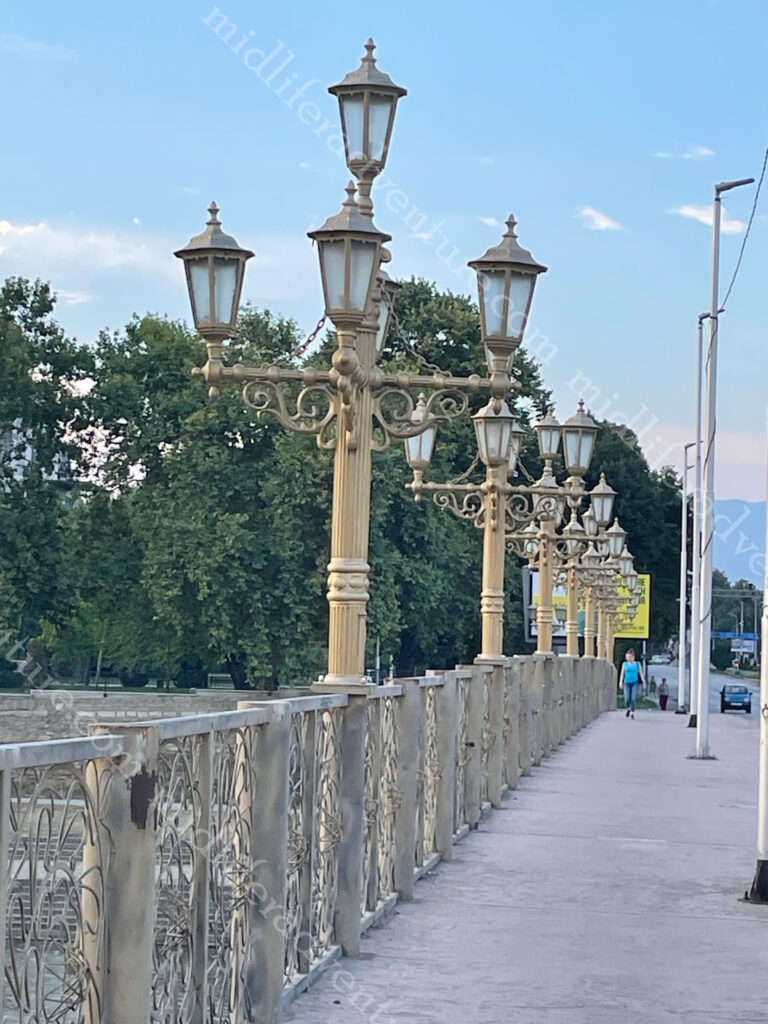
From where we were the first bridge we came across was the Mother Theresa Bridge. A vehicle bridge near the Macedonian Academy of Sciences and Arts, with some very cool lanterns and lights.
It was built in 1963 after the earthquake but was revamped in 2011 with the addition of new railings (painted in gold) with decorative candelabras.
Next in line was the Bridge of Art which is a pedestrian bridge that features statues of noted Macedonian artists and musicians.
The bridge includes 29 sculptures, with 14 at each side and one in the centre.
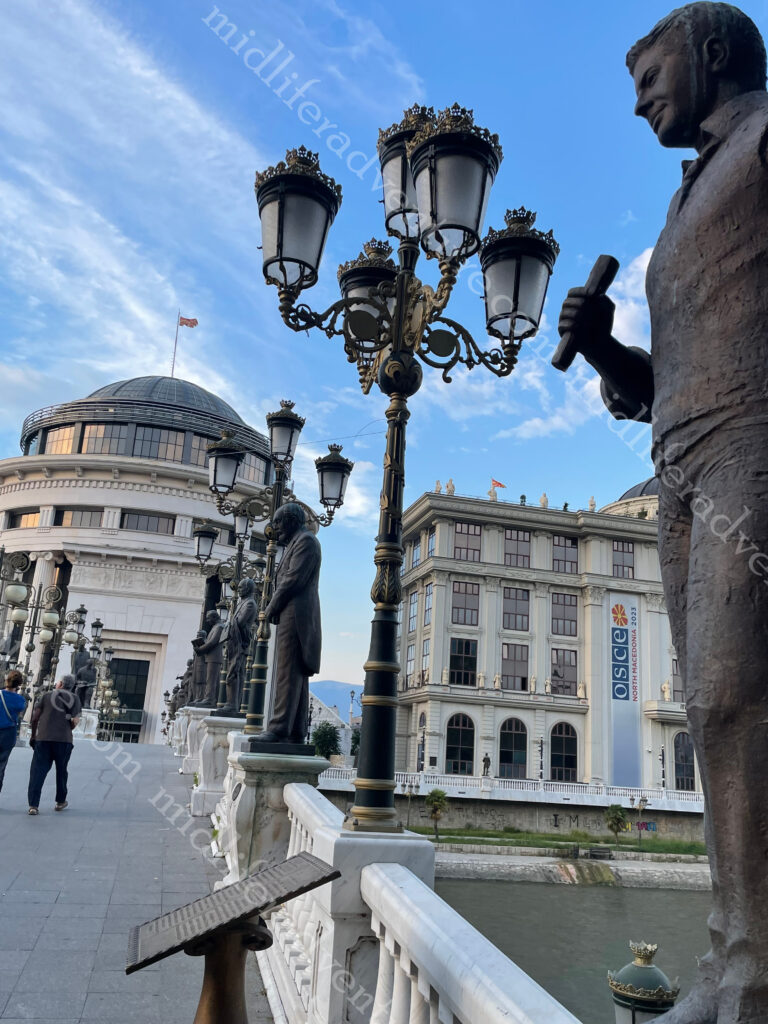
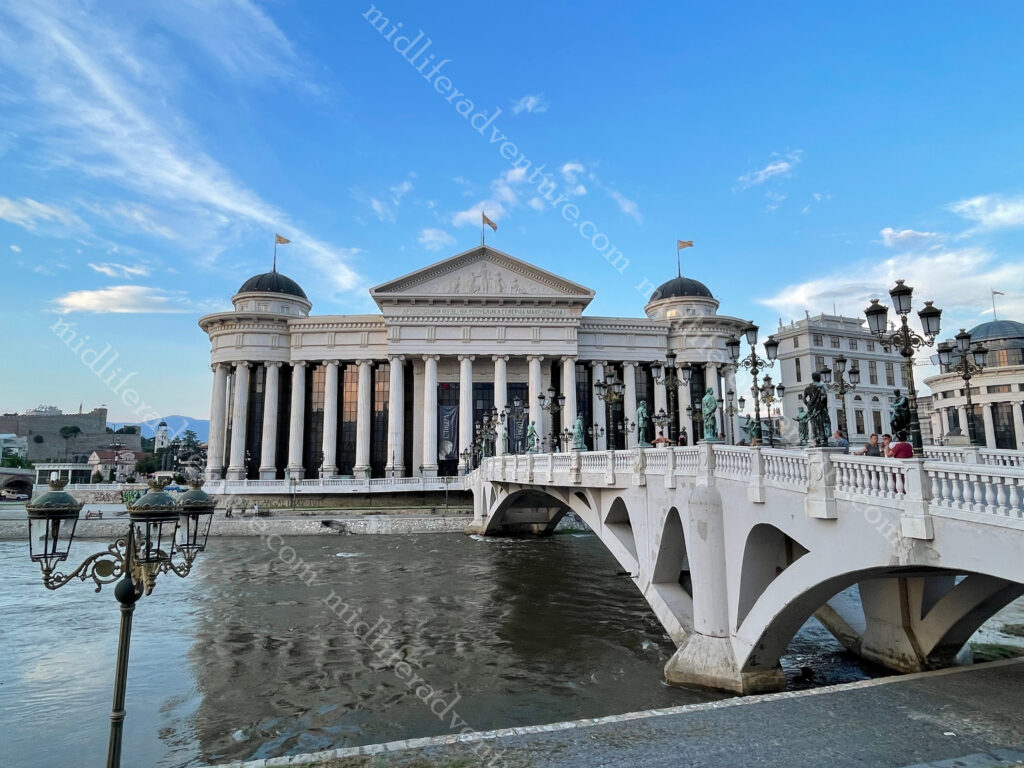
Next was the Bridge of Civilisations (formerly the Eye Bridge), this one has more statue representations of historic figures whose life’s work has left a mark on this region.
As you do the walk along the river there are a couple of fixed buildings shaped to look like boats. One was derelict while the other seemed to be operating as a cafe or restaurant.
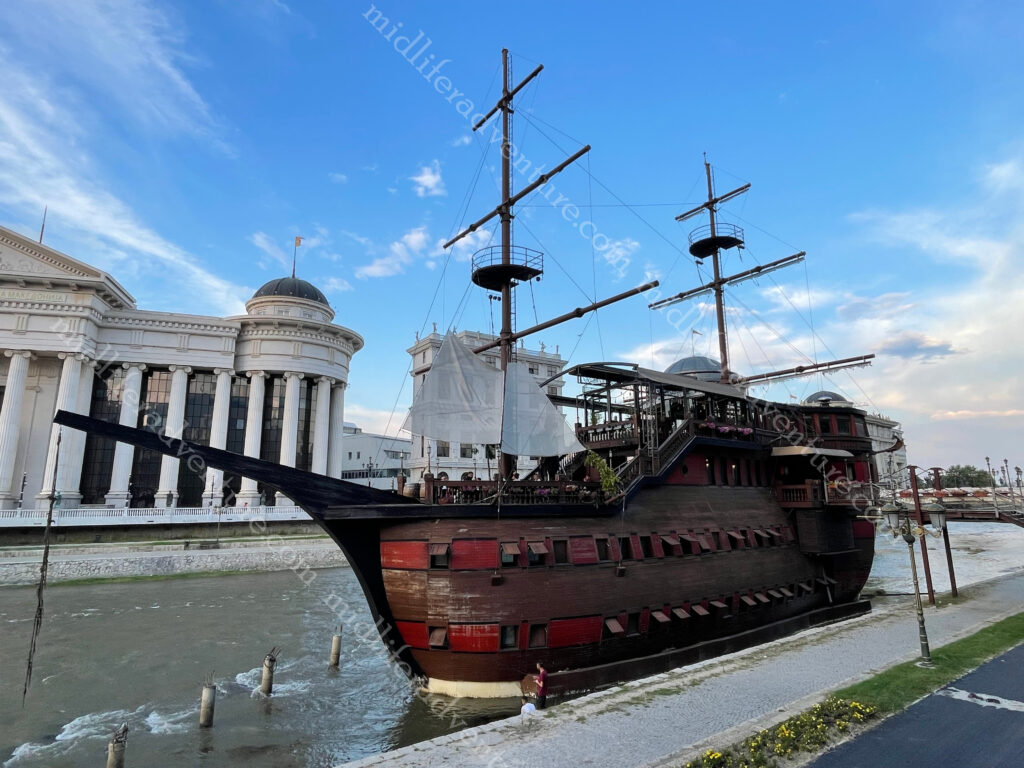
The stone bridge (also known as the Ottoman Sultan Mehmed II Bridge – as it was built under his patronage) is an old (built between 1451 and 1469) pedestrian bridge built on 10 arches that span across the Vardar river connecting Square Macedonia and the Old Bazaar area. It dates back to the the Ottoman period and is considered a symbol of Skopje and is the main element of the coat of arms of the city.





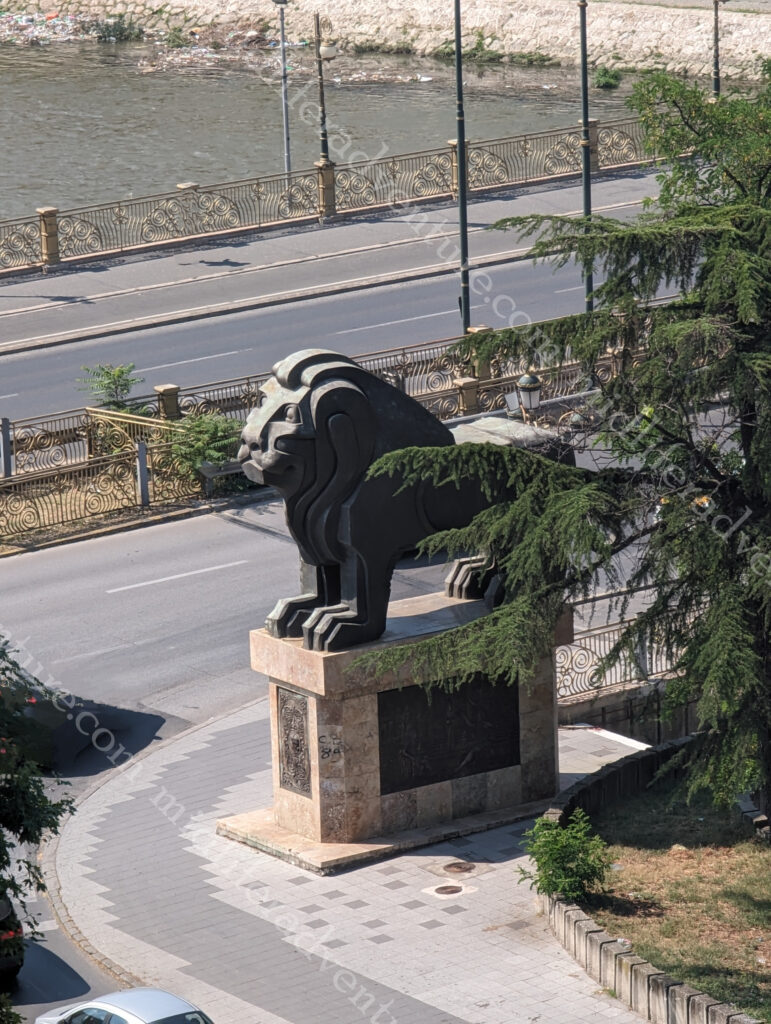
The Lion Bridge (Goce Delchev) is the last of the bridges in the main part of town. It is another vehicle bridge. Unsurprisingly, it has very large lion statues on it.
The lion sculptures stand five metres in tall and weigh five tons each.
Macedonia Square is the centrepiece of the new city. It is the biggest in North Macedonia taking up almost two hectares right in the heart of town. While the grand plan was to pull more tourists to town, the square and waterfront is a perfect conduit to achieve this. Apart from the sculptures there are places to shop, restaurants to eat and cafes to have a drink in the square. Sadly they have also included multiple casinos and gambling establishments.




The centrepiece of the of the square is a a giant statue titled ‘The Great Warrior’ which is so very overtly a statue of Alexander the Great but the name was changed to avoid conflict with Greece over history. Standing at 22 metres, or eight storeys high, the statue dwarfs its surroundings.

Porta Macedonia is a memorial arch leading to the main square that was built in 2012.
The arch is 21 meters tall and is dedicated to 20 years of Macedonian independence. Its outer surface is covered in 193 m2 of marble carvings that depict scenes from the history of Macedonia.
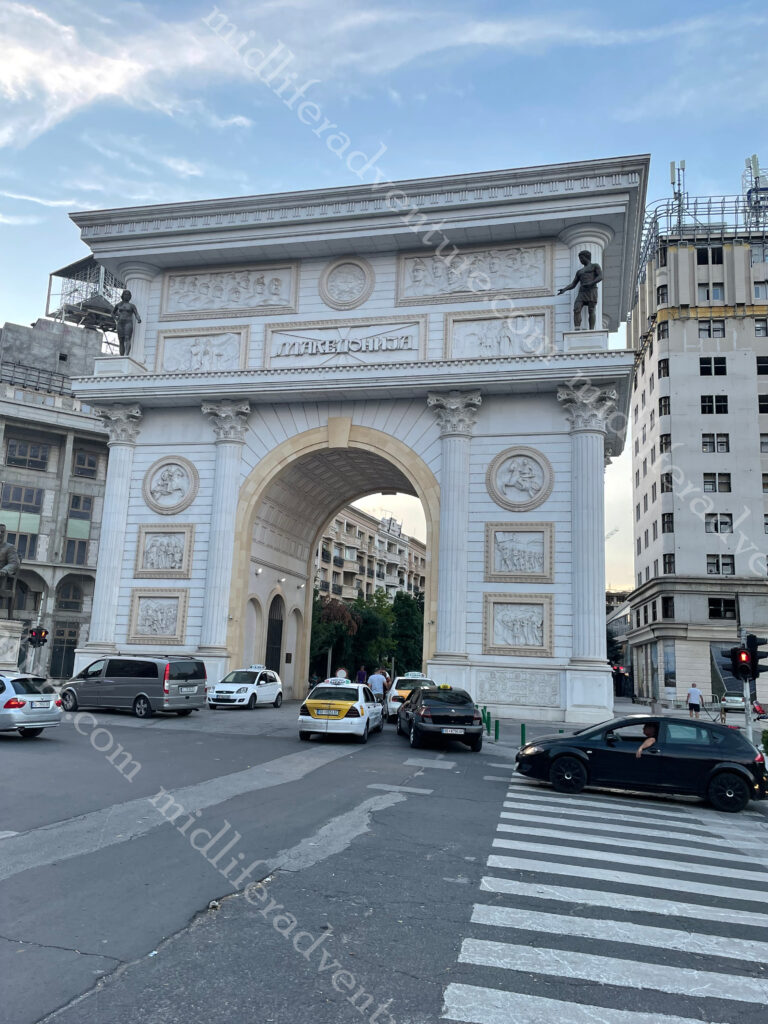
We broke one of our major rules and had dinner in the heart of the tourist area. In fact, we did it on the main square, overlooking the Alexander the Great statue. Usually, this rule is in force due to extortionate prices and poor quality. We have been smashed before by extortionate pricing, (notably in places like Milan, Paris and Rome) hence the rule. The rule typically extends to include airports, bus and train stations too.
But in this case, we were astounded. The food was amazing and the cost was very manageable, in fact, cheap even.





The next morning we were up early to do the rest of the tourist hop (as the projected temperature was again in the high 30s). On the first day we did not cross the river but merely wandered along it and checked out the square. This is when we got most of the statue photos and where we got to take in the buildings along the riverfront.





So the first major stop was at the Opera and Ballet house with an absolutely bizarre set of statues and Greek columns outside of a chunky Russian styled block, with an angular chunk behind it, next to a round lump that is the opera house. The whole thing was totally out there and a little difficult to understand.




The Archeology Museum sits at the end of the Art Bridge. Inside you can see about 7,000 historical artifacts from the Ancient, Medieval and Ottoman Periods.
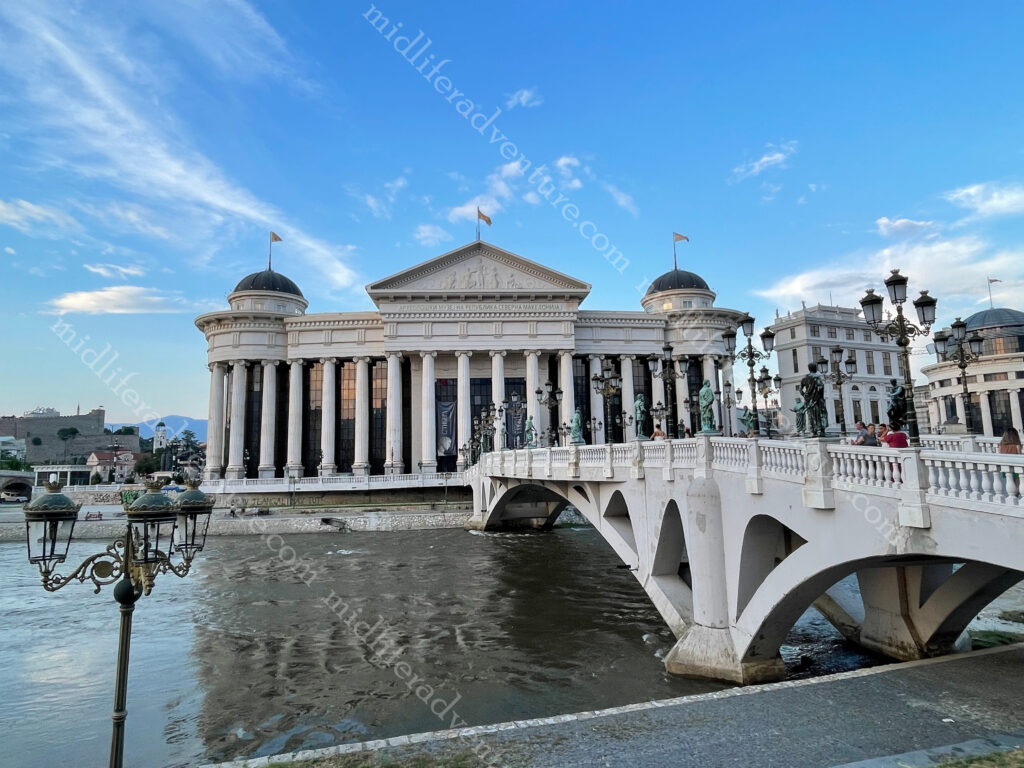
On the opposite side of the stone bridge, you find another huge statue. In fact, at 28.5 meters tall it is bigger than the Alexander the Great Statue in the main square. This one is of Philip of Macedon (who was Alexander the Great’s father), however, it is officially the Founder of Heraclea Statue (name change to avoid conflict with Greece). It is a 3 tier number with Philip at the top.



Carsija is the Old Skopje Bazaar dates back to the twelfth century and is over the Stone Bridge on the left side of Vardar. This is the old part of the city where the original narrow cobblestone streets take you past inns, baths, mosques and tombs from the Ottoman era. Sadly, much like the new bit this too is being corrupted and much of the old world charm is being lost to commercial uniformity.




Kale Fortress sits on the highest point in the (old) city overlooking the river. The first fortress was built in the 6th century AD and is believed to have been further developed during the 10th and 11th centuries. Interestingly, it is totally free. As was everything else we had seen through the two days of exploring.








Add to the Old Town area the buildings, the mosque, the carvings, and the fountains. There really is a ton to see here. Very little of it is real or authentic, but there is a lot of it.








On the way out of Old Town we came across something that I thought had died out decades ago. A dude running the 3 card scam.
Jill tried to get a photo but he got really pissed. Thankfully her super zoom on the phone allowed her to get far enough away to catch a couple of shots, but he was very keen not to be photographed doing his thing.
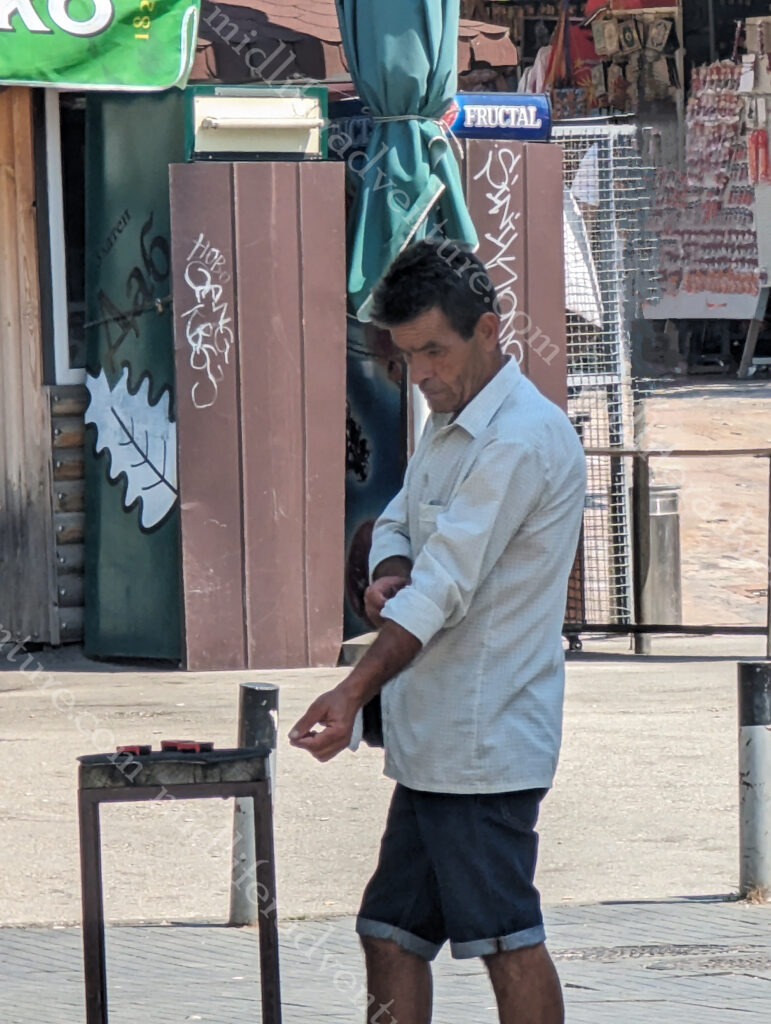
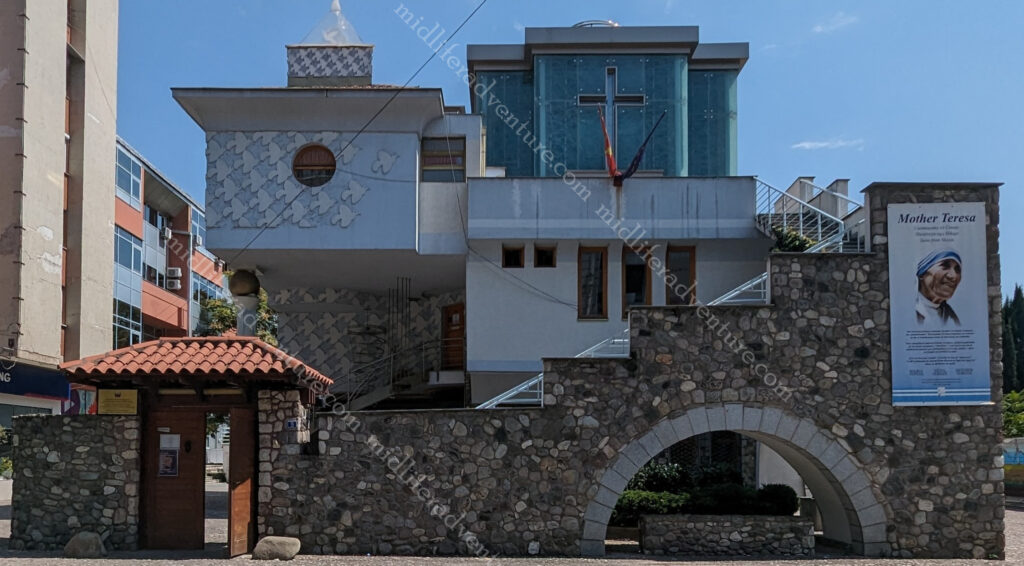
Mother Teresa House was built in her memory, there are many photographs and belongings about her childhood and life that started in Skopje in 1910.
The Church of St. Constantine and Helena is a 30-metre tall church covered in white travertine limestone. It was meant to have been built on the main square but in the name of religious equity, it had to be moved to off square so as not to offend the country’s large Albanian Muslim minority.
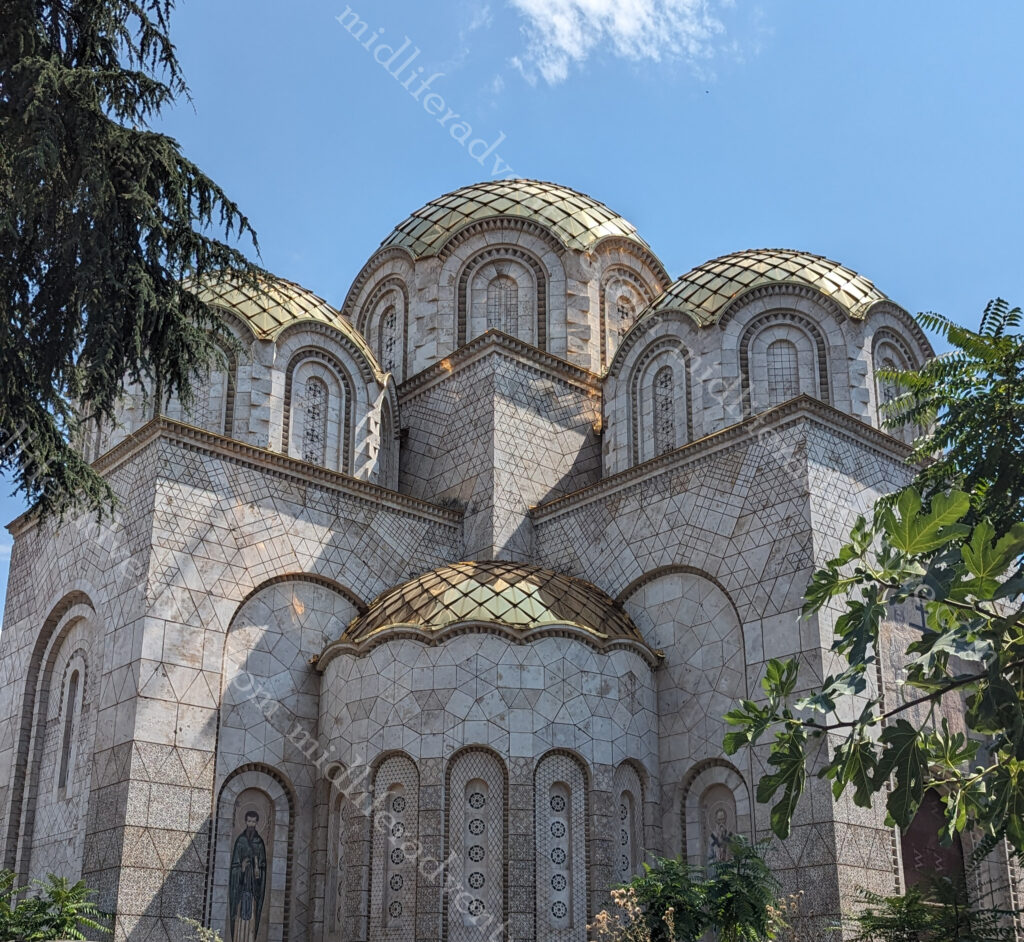
This post has been huge and has been hard work. This place has so much to see and do that it really needed all of this space and I am certain that I have undercooked the writeup entirely. Yes, it is mostly all new and yes it is largely manufactured and at least a little fake, but long story short, I loved this place. It had a great feel about it, was cheap as chips and is somewhere you could easily spend a relaxing month just pottering about or day-tripping to nearby places.